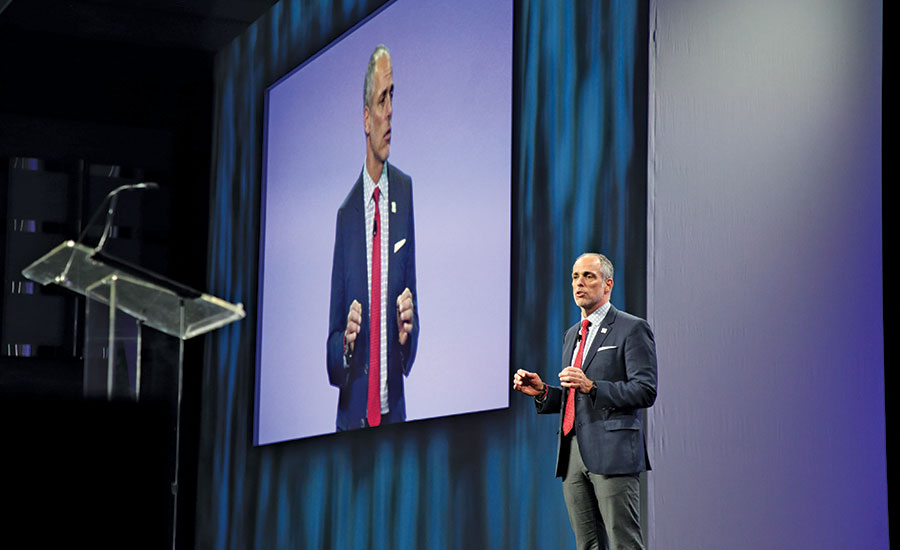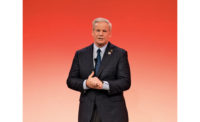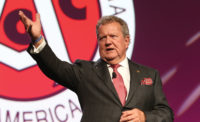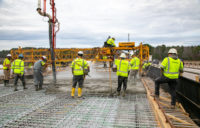The ongoing call for better infrastructure funding, along with workforce innovation and an enhanced focus on diversity and inclusivity, is taking center stage at the Associated General Contractors of America. The association’s leaders emphasized that these issues are crucial to the industry’s future as more than 2,800 attendees gathered for AGC’s annual convention in Denver April 1-4.
Federal funding for infrastructure remains a top priority for the association, which has expanded its coalition to engage more of the business community—including a partnership with the National Association of Manufacturers—in a push to achieve a viable bill.
“We think we’re doing everything we can to create the right political environment to get something done,” AGC CEO Steve Sandherr told ENR. “We had a lot of input in the principles the administration put out last year, and we are creating a grassroots army through social media of people that aren’t affiliated with the construction industry that are contacting their members of Congress saying infrastructure is a top priority.”
But, Sandherr cautions, “Members of Congress—the leadership in both parties—have to decide if this is going to be a priority for them,” he says. “There’s been a lot of happy talk since the election about this being an issue that can generate bipartisan support, and we’re doing everything we can to ensure it stays within the areas of consideration.”
AGC leadership says there are many ways to fund an infrastructure bill, but flexibility is the key. While transportation user fees are one option, those fees will need to change as technology evolves.
“You can’t just do it with the gas tax because we’re going to have more electric vehicles,” says 2019 AGC President Dirk Elsperman, COO and executive vice president at Tarlton Corp., St. Louis.
AGC leaders say that a federal increase will be needed while also making sure that municipalities and states are subsidizing their programs to ensure local investment in projects. Congress has until Sept. 30, 2020, to bankroll the Highway Trust Fund. That’s just five weeks before the next national election, so there’s a time incentive to get a bill done. The new measure, which has yet to be drafted, would succeed the 2015 Fixing America’s Surface Transportation, or FAST, Act.
“There’s starting to be a recognition that they’ve run out of gimmicks. They have got to address this in a way that pays for it,” Sandherr says. “The logical, rational, fairest way to pay for it is to increase the user fee. Unfortunately, it’s a tough vote for some folks, otherwise it would have been done a long time ago.”
And if the White House and Congress continue to kick the can farther down the road? “It would just be a disaster if we were to lose the funding we have. The drain on the economy would be staggering,” Elsperman says.
Workforce Issues
With labor shortages deepening across all sectors, AGC is doubling down on its efforts to recruit and retain the workforce of tomorrow while seeking to lead the industry in inclusion and diversity efforts, says Elsperman. “And it’s not enough to just get [workers] here, we have to keep them in construction,” he adds.
AGC’s recent report, “The Business Case for Diversity & Inclusion in the Construction Industry,” outlines six reasons why diversity and inclusion initiatives are strategically valuable. They include generating corporate innovation, increasing profitability and ensuring a sustainable future for construction firms.
“As we diversify our workforce, we will also diversify our thinking. And, as a result, how we complete our projects will continue to evolve,” Elsperman says.
AGC is looking at innovative ways to find more people for industry jobs—reaching into urban neighborhoods, conducting training in prisons and pushing for an expanded guest worker visa program. Half of today’s students are non-white, and while women make up 47% of the U.S. workforce, they are just 9% of the construction workforce, Sandherr says, adding that the industry’s workforce will look very different in 20 years.





